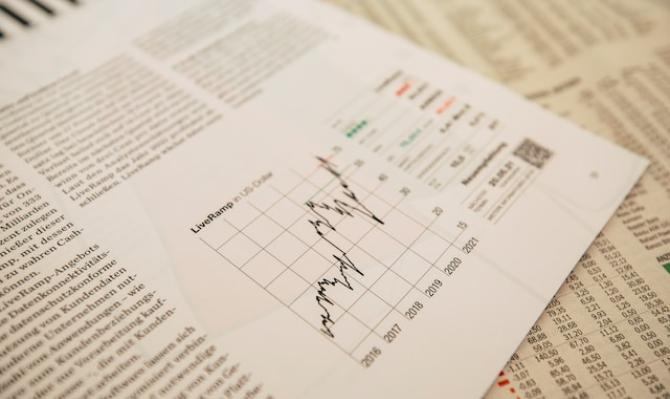To borrow or not to borrow: a dilemma that depends on what was saved during the pandemic
In this article we analyse whether the savings accumulated during the pandemic are currently acting as a pushback for new consumer lending. If so, will this remain the case into next year?

Historically, and in general, increases (or falls) in consumption go hand in hand with bigger increases (or falls) in consumer loans. This relationship is particularly close in the case of durable goods, which is the category that receives the most financing since it often involves larger expenditures.
Unlike in past crises such as the Great Recession, this time the rebound in consumption will be higher: we expect nominal consumption growth in 2021 and 2022 to be higher than the gradual recovery seen in the previous crisis. This higher recovery rate is explained by the fact that much of the savings generated in 2020 were forced and are expected to be undone relatively quickly, and also because the economic support measures have mitigated the impact of the crisis on households. This more rapid recovery in consumption will also drive greater growth in consumer lending, although the extent of the rebound will depend on how the excess savings have been distributed.

During 2020, household debt for consumption purposes fell by an annual rate of 2.6% due to the collapse in consumption (which fell by 12% in 2020) as a result of the restrictions on mobility. These exceptional circumstances also affected new consumer lending, which fell by an annual rate of 26.6%. This contraction of debt was partially eased by the legislative and sectoral moratoria provided to the most vulnerable households.
During 2021, and following the lifting of the restrictions on mobility, consumption has recovered and, with it, new lending. In particular, between January and September, cumulative new lending has grown by 7.6 % year-on-year. This has brought the contraction in household consumer debt down to a more moderate –0.4% in the current year to date. When we use internal and anonymous CaixaBank data to study how this debt has evolved during 2021 by income level,1 we see that it has increased for the lowest-income group, has fallen significantly for middle-incomes and has fallen more gently among high incomes.
- 1. Up to September, the last month for which we have data as of the close of this Monthly Report.

With regard to middle incomes,2 the result is consistent with a deleveraging process, since this was the group that had amassed the highest volume of debt prior to the pandemic (58% of consumer debt was concentrated in this group). In addition, this collective saved a lot during 2020, accounting for around 60% of the aggregate excess savings in 2020 according to estimates based on internal data. Our results suggest that these middle-income households have taken advantage of their excess savings not only to consume in large quantities,3 but also to deleverage. In other words, there has been some pushback for this group. In contrast, lower-income households had modest excess savings in 2020 and they are also the ones who are consuming the most vigorously in 2021 compared to the pre-pandemic period. It is therefore logical that they are financing this high level of consumption, which would explain why their debt has risen since the height of the pandemic. Finally, those with high incomes, who accumulated 38% of the excess savings in 2020, have a low burden of consumer debt relative to their income, and this would explain why they have not used these savings to reduce their debt to the same degree as middle-income households.
- 2. When we talk about middle incomes, we refer to the sum of medium-low, medium and medium-high incomes.
- 3. Indeed, we see a significant rebound in consumption compared to pre-pandemic levels among middle-income households. This rebound is greater in the case of the second income tranche (medium-low incomes) and progressively declines for the following tranches, although it is also above the growth levels typical of a normal year. See the article «Consumption and pent-up demand: what is the profile of the star consumer in the recovery?» in the Dossier of this same Monthly Report.

In order to understand future needs for consumer financing, we must first understand what portion of pent-up consumption will materialise in the remainder of 2021 and how much can be satisfied by the savings accumulated during the pandemic.
Based on internal data, we estimated the additional consumption that will occur in 2021 compared to the consumption we would have seen before the pandemic, split by income tranche.4 When compared to the excess savings generated in 2020 by income tranche the results suggest that, on aggregate, half of the excess savings will be undone in 2021 if consumption continues to recover in the final stages of the year as it has done to date. In particular, our results (see fourth chart) show that the low and medium-low income groups will already have consumed all of the excess savings from the pandemic by the end of 2021, while the medium-income group will have consumed 60% and the medium-high and high-income groups, well below half. It should be noted that these figures represent a higher threshold, since the exercise does not incorporate the materialisation of some latent risks, such as the supply restrictions arising from logistical problems in global value chains. Thus, if the supply problems we are seeing peak in the closing months of the year, then the upturn in consumption would be somewhat dampened, such that the pent-up demand released in 2021 would be below half of the excess savings accumulated in 2020. In addition to this risk, we must consider how high inflation could alter household consumption decisions.
- 4. In other words, we compared the estimated consumption for 2021 with the consumption resulting from maintaining the marginal propensity to consume of 2019 with the actual gross disposable income of 2021, and we attributed this difference to the pent-up demand from the pandemic.

The results are in line with the recovery in new lending which we are seeing in 2021. Low and medium-low income groups do not have sufficient savings accumulated in 2020 to satisfy their pent-up demand, so they are resorting to bank financing, in addition to using the savings accumulated before the pandemic. In contrast, other income groups still have a savings buffer with which to fund 2022 consumption or to increase their long-term savings for future investments or retirement.
For 2022, consumption growth is expected to be vigorous and above the historical average. This growth will be supported by favourable financial conditions, the portion of pent-up demand that is yet to materialise and the funds from the NGEU European recovery plan. These European transfers are intended to promote sustainable mobility and the refurbishment of housing in order to boost energy saving, among other aspects, and this will fuel the consumption of durable goods such as electric cars, charging points, household appliances, more energy-efficient heating and air conditioning appliances, etc. In addition, the aid directed at the private sector does not cover the full amount of the investment, so co-financing will be required.
Much of next year's consumption for low and medium-low income groups, especially for durable goods, will be supported by bank financing, given that they will no longer have the buffer of their 2020 savings. In addition, for medium and medium-high income groups, we estimate that the additional consumption expected in 2022 relative to average pre-pandemic consumption levels will be greater than what remains of the savings accumulated during the pandemic (provided that the current supply problems do not persist). Therefore, these income groups will also require other sources of funding, such as bank finance.5 As a result, new consumer lending is expected to grow significantly in 2022.
- 5. In addition to relying on savings accumulated prior to the pandemic and reducing their savings rate in 2022.
- 1. Up to September, the last month for which we have data as of the close of this Monthly Report.
- 2. When we talk about middle incomes, we refer to the sum of medium-low, medium and medium-high incomes.
- 3. Indeed, we see a significant rebound in consumption compared to pre-pandemic levels among middle-income households. This rebound is greater in the case of the second income tranche (medium-low incomes) and progressively declines for the following tranches, although it is also above the growth levels typical of a normal year. See the article «Consumption and pent-up demand: what is the profile of the star consumer in the recovery?» in the Dossier of this same Monthly Report.
- 4. In other words, we compared the estimated consumption for 2021 with the consumption resulting from maintaining the marginal propensity to consume of 2019 with the actual gross disposable income of 2021, and we attributed this difference to the pent-up demand from the pandemic.
- 5. In addition to relying on savings accumulated prior to the pandemic and reducing their savings rate in 2022.




